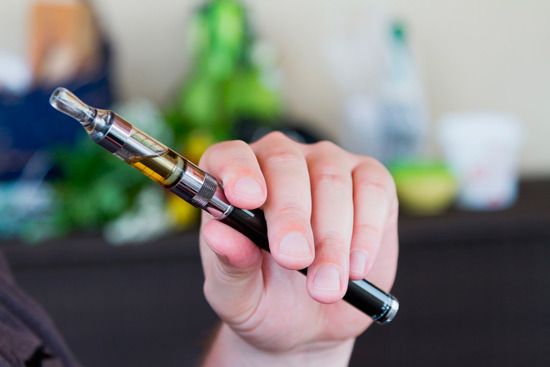A week from today, the Tacoma-Pierce County Board of Health will vote on a regulation that aims to limit underage use and possession of e-cigarettes and vaping products.
The board will be taking public testimony on the proposed regulation at approximately 3 p.m. Nov 18 before the vote.
The proposed regulation would make it illegal to use e-cigarettes and other vapor products in public places.
This includes adult-only venues and places of work. Bans on e-cigarettes in the work place are optional at the discretion of the employer.
Although it has been illegal for e-cigarette and vapor product vendors to sell minors tobacco and vapor products, it has not been illegal for minors to possess e-cigarettes and liquid nicotine.
The proposed regulation would make it illegal for minors to possess all vapor products.
E-cigarette and vapor retailers will be required to have an annual permit to continue to sell vapor products if the regulation passes.
The annual retail permit fee is estimated to be around $375.
Finally, child-resistant packing on vapor products will be required for e-cigarette and vapor products.
The Food and Drug Administration does not currently require vapor product packaging to be child-resistant.
What’s the harm?
For those not in the know, e-cigarettes are electrical devices that vaporizes e-liquid for the user to inhale, unlike traditional cigarette, which release chemicals in the form of smoke.
E-liquid consists of liquid nicotine, flavoring and other chemicals. The potency of liquid nicotine in e-liquid can vary from product to product, and e-liquid without nicotine can also be purchased.
The danger of minors using e-cigarettes is in the potential of addiction to nicotine and the risk of minors, especially young children, having easy access to a potent poison, according to the Tacoma-Pierce County Health Department.
The Health Department cited part of the 2014 Healthy Youth Survey (select “Tobacco Use” for relevant grades near the bottom of the page, to the left, for results), which studied health patterns of middle and high school students throughout Washington.
According to the survey, 23 percent of Washington high school seniors and 18 percent of sophomores used e-cigarettes 30 days prior to the survey in 2014.
In Pierce County, 20 percent of sophomores and 23 percent of seniors used e-cigarettes in 2014.
Fourteen percent of King County sophomores and 22 percent of seniors used e-cigarettes in 2014.
Although the Healthy Youth Survey started collecting data on e-cigarette smoking patterns on middle and high schoolers in 2014 and has no data for previous years, the survey shows e-cigarette use is consistently equal to, and in most cases higher, than traditional cigarette and smokeless (chewing) tobacco use.
Besides being an addictive substance, liquid nicotine is also a potent poison that can not only be inhaled as a vapor, but absorbed through the skin.
The amount of liquid nicotine in e-liquid varies, but according to Dr. Lee Cantrell, director of the San Diego division of the California Poison Control System, children exposed to less than a tablespoon of e-liquid can seriously harm or kill them, he told the New York Times.
The Washington State Poison Center started receiving phone calls related to e-cigarettes and liquid nicotine in 2010. The Poison Center received two calls that year.
In 2013, the Poison Center received 73 calls, and then 182 calls in 2014.
Sixty percent of the calls made to the Poison Center in 2014 concerned a child between 1 and 3 years old.
Cancer?
Whether or not e-cigarettes and e-liquid cause cancer is a question that is still up in the air.
Unlike the upward of 69 different carcinogens found in cigarettes, nicotine itself has not been shown to be a carcinogen, according to the 2010 Surgeon General’s Report.
However, some studies show e-cigarettes may still release harmful chemicals besides nicotine. Claims have been made that high voltage e-cigarettes release vaporized formaldehyde, a carcinogen also found in traditional cigarette smoke, but at higher levels than cigarette smoke.


